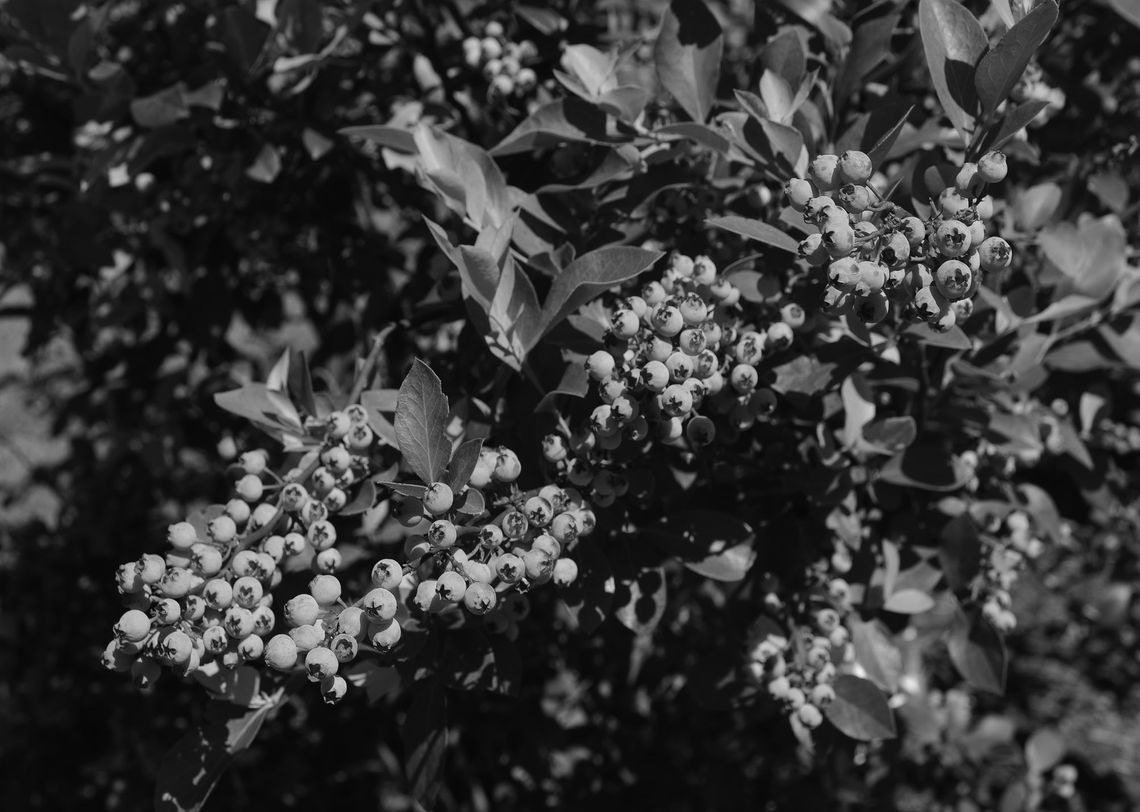Get it growing
School is out, and summer is near. Here’s something else to celebrate: Blueberries — those refreshing, deeply hued orbs of sweetness — are now ripening on bushes across Louisiana.
Blueberries are among the easiest fruit crops to grow. These deciduous shrubs provide aesthetic value and attract pollinators and birds, too. And they can even be grown in containers.
If you want to add blueberries to your home landscape, you’ll find a good selection at garden centers this time of year. Just remember that, if you want to plant them in the ground, it’s best to wait until fall or winter to reduce stress on the plants.
There are lots of different kinds of blueberries out there. How do you decide what to buy?
First things first: Make sure you get more than one plant, ideally of two to three varieties. Blueberries need cross pollination for maximum fruit production. Having multiple varieties encourages better-quality berries and a bigger harvest.
Second, you’ll need to decide between rabbiteye and Southern highbush blueberries.
Rabbiteye blueberries (Vaccinium virgatum or V. ashei), which are native to the southeastern United States, are most common in Louisiana. These plants tend to be long lived and disease resistant, and they usually produce fruit between May and July. Before berries ripen, they are pink, reminiscent of the eyes of albino rabbits.
Southern highbush blueberries, on the other hand, ripen as early as April and are widely used in commercial production in other states. They’re crosses between native Southern blueberries and Northern highbush blueberries (Vaccinium corymbosum), which are grown in places like New Jersey and Michigan.
Highbush blueberries have that name because the plants grow taller than lowbush blueberries (Vaccinium angustifolium), which are found in Canada and New England.
Southern highbush blueberries aren’t for everyone. In fact, LSU AgCenter horticulture agent Mary Helen Ferguson generally steers home gardeners away from them.
“I don’t typically recommend people grow them unless they really want the earlyripening varieties and they know what they’re getting into,” she said.
To understand what Ferguson means, it’s important to talk about the concept of chill hours.
Most fruit crops — blueberries included — need to be exposed to a certain number of hours of cold temperatures to ensure productivity. Different blueberry species and even individual varieties have different chilling requirements, making it crucial for growers to choose plants that will work well in their local climate.
“If a variety requires too few chilling hours, it’s likely to flower too early and have those flowers killed by a late freeze,” Ferguson said. “If it requires too many chilling hours, it won’t crop consistently.”
Because most Southern highbush blueberries need fewer chill hours, they begin setting flowers and fruit sooner. That’s fine and dandy — unless a late freeze enters the forecast.
“The flowers or the fruit will get killed by a late freeze,” Ferguson said. “They also tend to be more finicky in terms of soil requirements. They need good drainage, high organic matter and soil pH within the appropriate range. And they tend to be more susceptible to diseases.”
Still, she added, Southern highbush varieties yield highquality fruit. And the prospect of an earlier crop of berries can be important for commercial producers, who sometimes plant both Southern highbush and rabbiteye blueberries to lengthen their season.
Southern highbush blueberries also may be a fit for some home gardens.
“If you’re along the coast or in New Orleans where you don’t get a lot of chilling, you may want to look at growing Southern highbush varieties in pots,” Ferguson said.
But for most folks, rabbiteye blueberries are the way to go.
Ferguson is evaluating 31 blueberry varieties — both rabbiteye and Southern highbush — at the Ag-Center Hammond Research Station.
“I wanted to look at how some of the varieties that were not commonly planted in Louisiana performed here,” she said. “There’s a lot of new blueberry varieties that have been released in the last 20 or 30 years, and a lot of the varieties that we’ve grown are ones that have been around for a long time.”
Last year, the top producers in Ferguson’s study were largely old standards: Tifblue, Ochlockonee, Brightwell, Premier and Austin, all of which are rabbiteye varieties.
“All of those yielded over 10 pounds per plant on average,” Ferguson said.
You can learn more about growing blueberries and find publications specific to rabbiteye and Southern highbush production at www.LSUAgCenter. com.



